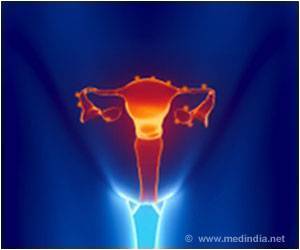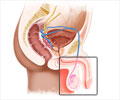Genetic screening using pap test fluid may be useful for earlier diagnosis and treatment of ovarian and endometrial cancers
- Genetic testing of pap test fluid may be useful to screen for and make early diagnosis of ovarian and endometrial cancers sooner with improved patient outcome
- Endometrial cancer is on the rise, particularly in younger women due to the increasing incidence of obesity
- Gynecological cancers result in approximately 25,000 deaths per year and are the third leading cause of cancer associated mortality
Why Screening Test For Gynecological Cancers Is Important
- As stated previously, endometrial cancers are on the rise and gynecological cancers are responsible for a majority of cancer related deaths.
- Additionally many of these deaths occur because the cancer has spread widely even before diagnosis making them incurable.
- Also, costly diagnostic tests often may not distinguish between benign and cancerous growths leading to unnecessary tests and procedures on the patient.
- This further underscores the need for screening tests with earlier diagnosis and treatment, with significantly better patient prognosis, which is the aim of the PapSEEK test.
"Additionally for young women who are diagnosed, loss of fertility is common. If we could detect the cancer earlier using a test like PapSEEK, the potential to achieve more cures and preserve fertility in select women could be realized."
Interestingly the team have also announced the development of CancerSEEK, a single blood test that screens for eight cancer types, as well as UroSEEK, a test that detects bladder and upper urinary tract cancer examining cells found in urine.
Methods of the Study
Since the pap test fluid can contain cells shed from the ovary and endometrium, analyzing the fluid for the presence of these cells could potentially aid in the earlier detection of cancer changes and appropriate intervention sooner.- The team analyzed 1,958 samples obtained from 1,658 women, that included 658 endometrial or ovarian cancer patients and 1,002 healthy controls. Some of the women provided both samples.
- Pap brush samples were also got from 382 endometrial cancer patients and 245 ovarian cancer patients.
- The PapSEEK test was found to be nearly 99 percent specific for cancer, and identified 81 percent of endometrial cancers (78 percent early-stage cancers) and 33 percent of ovarian cancers (34 percent early-stage cancers).
- Using a Tao brush, which extends further into the cervical canal and sampled cells closer to the uterus or ovaries, improved the sensitivity of the test.
- Testing plasma samples together with Pap brush samples also increased the sensitivity of the test.
- Of the 123 endometrial cancer patients who were tested using Tao brush samples, PapSEEK detected cancer 93 percent of the time.
- Of the 51 ovarian cancer patients studied, 45 percent were diagnosed as positive with PapSEEK. There were no false-positive results.
The Tao brush is not commonly used in the United States but is approved by the U.S. Food and Drug Administration for endometrial sampling.
- When both the plasma and Pap brush samples were analyzed, the sensitivity for ovarian cancer rose to 63 percent.
"Our study therefore demonstrates the ability to detect endometrial and ovarian cancer using cervical fluids obtained using two different methods," said Yuxuan Wang, first author on the study.
In conclusion this test if it is approved for routine clinical use could lead to earlier detection of gynecologic cancers in a non-invasive manner with earlier treatment.
About Gynecologic Cancers
There are several types of gynaecological cancer also referred to as women's cancers. The most common gynaecological cancers are- endometrial (womb lining) cancer
- ovarian cancer
- cervical (neck of the womb) cancer
Each one is unique, with differing signs, symptoms, and risk factors (things that may increase the chance of getting cancer). The risk of developing gynecologic cancer increases with age. It is possible to reduce the risk for some of these cancers. Early diagnosis and treatment of these cancers gives the best patient outcome.
Some Tips To Reduce Risk of Gynecologic Cancer
- Have regular exercise and maintain a healthy weight
- Avoid smoking
- Have periodic screening tests (Pap smear, mammogram) especially if there is positive family history in first degree relatives
- HPV (human papilloma virus) vaccination of all girls aged 9-21 years to prevent cervical cancer
References:
- What Can I Do to Reduce My Risk? - (https://www.cdc.gov/cancer/gynecologic/basic_info/prevention.htm)
- About gynaecological cancer - (https://www.guysandstthomas.nhs.uk/our-services/cancer/cancer-types/gynae/overview.aspx)
















